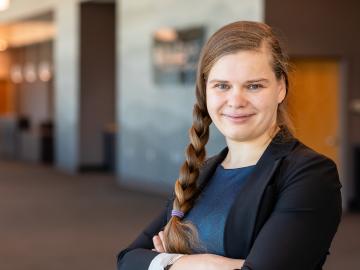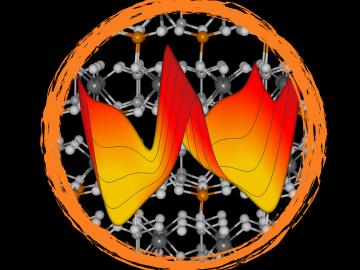Filter News
Area of Research
- (-) Materials (55)
- (-) Supercomputing (31)
- Advanced Manufacturing (6)
- Biological Systems (1)
- Biology and Environment (4)
- Building Technologies (1)
- Clean Energy (60)
- Climate and Environmental Systems (2)
- Computational Engineering (1)
- Computer Science (8)
- Fusion Energy (6)
- National Security (5)
- Neutron Science (23)
- Nuclear Science and Technology (11)
- Quantum information Science (3)
- Transportation Systems (1)
News Topics
- 3-D Printing/Advanced Manufacturing (5)
- Advanced Reactors (2)
- Artificial Intelligence (6)
- Big Data (4)
- Bioenergy (3)
- Biomedical (2)
- Clean Water (2)
- Composites (1)
- Computer Science (24)
- Cybersecurity (2)
- Energy Storage (5)
- Environment (6)
- Exascale Computing (2)
- Frontier (2)
- Fusion (2)
- Grid (1)
- Isotopes (1)
- Materials Science (18)
- Microscopy (5)
- Molten Salt (1)
- Nanotechnology (6)
- Neutron Science (5)
- Nuclear Energy (8)
- Physics (3)
- Polymers (2)
- Quantum Science (5)
- Security (1)
- Space Exploration (2)
- Summit (9)
- Sustainable Energy (6)
- Transportation (6)
Media Contacts

For nearly three decades, scientists and engineers across the globe have worked on the Square Kilometre Array (SKA), a project focused on designing and building the world’s largest radio telescope. Although the SKA will collect enormous amounts of precise astronomical data in record time, scientific breakthroughs will only be possible with systems able to efficiently process that data.

Gina Tourassi has been appointed as director of the National Center for Computational Sciences, a division of the Computing and Computational Sciences Directorate at Oak Ridge National Laboratory.

Friederike Bock, a Eugene P. Wigner Fellow, wants everyone to know scientists aren’t just robots—they want to help others understand their research, and they have wide-ranging interests.

Researchers at Oak Ridge National Laboratory demonstrated that an additively manufactured polymer layer, when applied to carbon fiber reinforced plastic, or CFRP, can serve as an effective protector against aircraft lightning strikes.

The American Nuclear Society (ANS) has recognized two nuclear researchers, Julie G. Ezold and Yutai Katoh, both of the Department of Energy’s Oak Ridge National Laboratory, at its annual Winter Meeting and Nuclear Technology Expo, held in Washington, D.C.

Students often participate in internships and receive formal training in their chosen career fields during college, but some pursue professional development opportunities even earlier.

A scientific team from the Department of Energy’s Oak Ridge National Laboratory and Vanderbilt University has made the first experimental observation of a material phase that had been predicted but never seen.

The U.S. Department of Energy’s Office of Science announced allocations of supercomputer access to 47 science projects for 2020.

Electrons in atoms are pretty talented. They can form chemical bonds, get kicked out of the atom and even “jump” to different locations based on their energetic states.

Researchers at ORNL and the National Renewable Energy Laboratory took inspiration from flying insects to demonstrate a miniaturized gyroscope, a special sensor used in navigation technologies.




